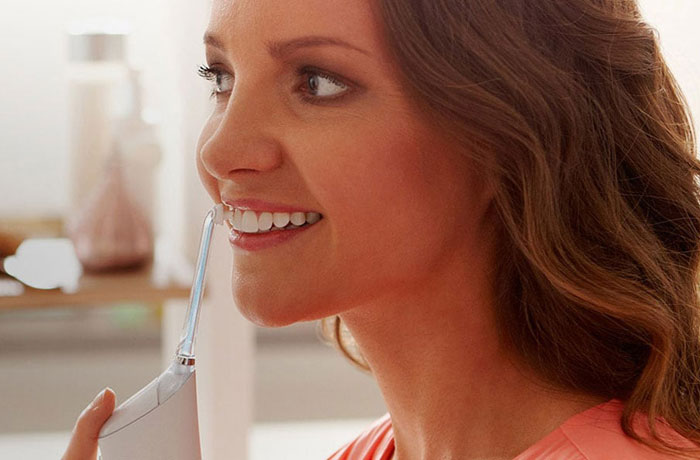Sensitive teeth: A guide to gentle yet effective care for pain-sensitive teeth
5 min. read
You’re enjoying a mouthful of delicious ice cream, only to immediately feel an uncomfortable pain in your teeth. Sound familiar? Many people have cold-sensitive teeth, but it’s not just cold that causes sensitivity. Hot, sweet, and sour food and drinks can also cause pain for people with sensitive teeth. Below, we’ll explore these reasons for pain-sensitive teeth:
In addition, we’ll show you the basics of good oral care for you and your children and explain how to prevent pain-sensitive teeth. Read on to discover our comprehensive guide to sensitive teeth and relief.
Common causes for sensitive teeth
A sensitive tooth reacts to cold and other external influences more strongly. It is usually indicated by a lightning-like pain, which moves into the jaw area. Sensitive teeth can have different causes, and with millions affected1,2, it’s important to know the cause of your sensitive teeth:
In addition to the above-mentioned reasons, there are several risk factors that contribute to your teeth becoming more sensitive over time. Further causes of pain-sensitive teeth are:

What helps sensitive teeth? Your sensitive teeth relief guide
Whether you have a tooth sensitive to cold but not hot, or your whole mouth has pain-sensitive teeth we’ve got you covered. The most important thing for healthy and pain-free teeth is thorough oral care. Avoid that shocking moment when your tooth reacts to cold or hot external sources, with this guide to sensitive teeth relief:
Recommended products
-
- Built-in pressure sensor
- 3 modes
- 1 x BrushSync feature
- Travel case
$199.00* -
- Quad Stream technology
- Pulse waves guide as you go
$219.00*
How to prevent sensitive teeth with simple remedies
Knowing the causes, and what helps sensitive teeth is only half the story. Another important step is prevention. The key to preventing sensitive teeth is to strengthen your tooth enamel. If your teeth are sensitive to cold or react with pain to other irritants, this can be an indication of weakened enamel. Avoid this with these tips for preventing sensitive teeth: No matter how common sensitive teeth are, with these simple actions you can help yourself and your family to have healthy and pain-free teeth in no time. * Based on two teeth brushing cycles of two minutes each per day in the clean program. * Based on two teeth brushing cycles of two minutes each per day in the clean program. Sources: 1 http://knowyourteeth.com/infobites/abc/article/?abc=S&iid=329&aid=1319
2 https://www.commerce.gov/news/blog/2022/01/us-population-estimated-332403650-jan-1-2022
3 https://www.webmd.com/oral-health/guide/receding_gums_causes-treatments
4 https://www.ncbi.nlm.nih.gov/pmc/articles/PMC4655683/
5 https://www.nidcr.nih.gov/health-info/bruxism
6 https://www.cdc.gov/oralhealth/conditions/index.html
7 https://www.ncbi.nlm.nih.gov/pmc/articles/PMC3431744/
8 https://www.cochranelibrary.com/cdsr/doi/10.1002/14651858.CD012018.pub2/full
9 https://www.ncbi.nlm.nih.gov/pmc/articles/PMC6104384/
10 https://www.ncbi.nlm.nih.gov/pmc/articles/PMC6406172/
11 https://www.ncbi.nlm.nih.gov/pmc/articles/PMC6195894/






